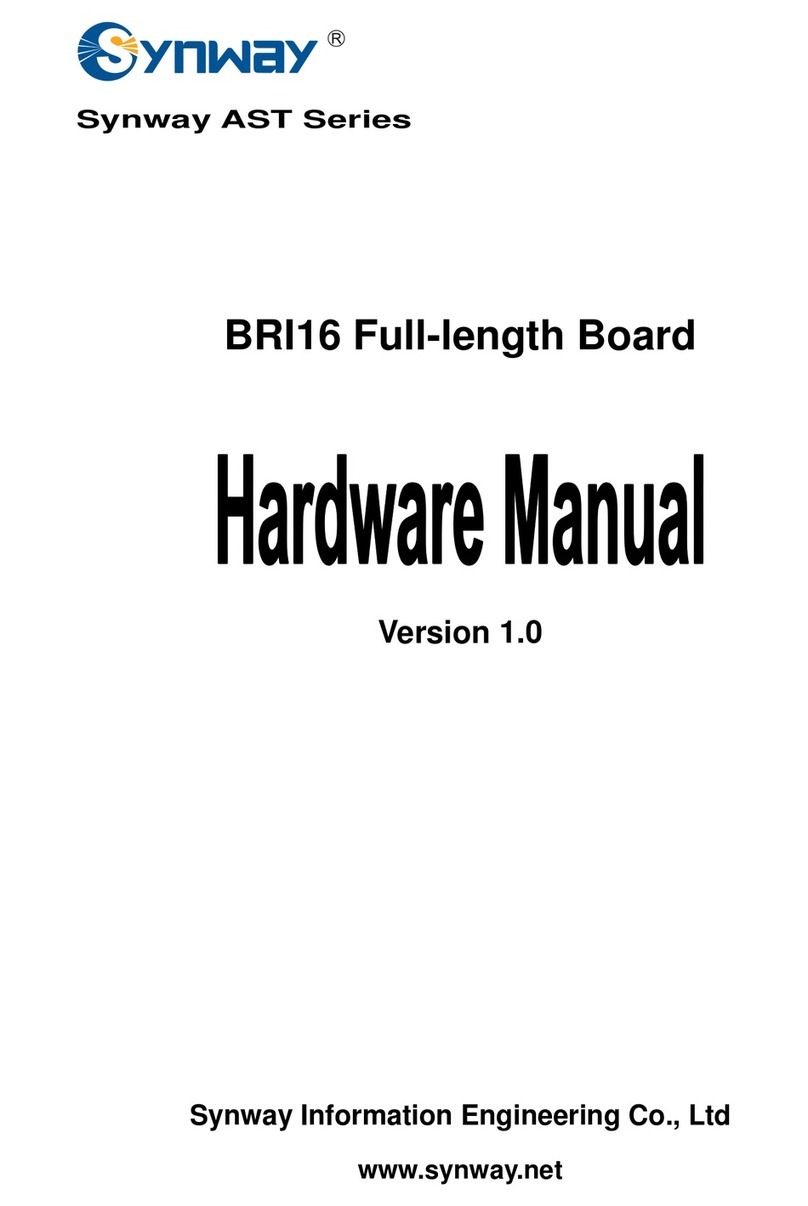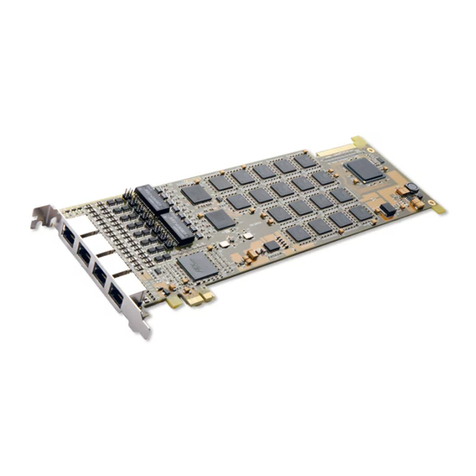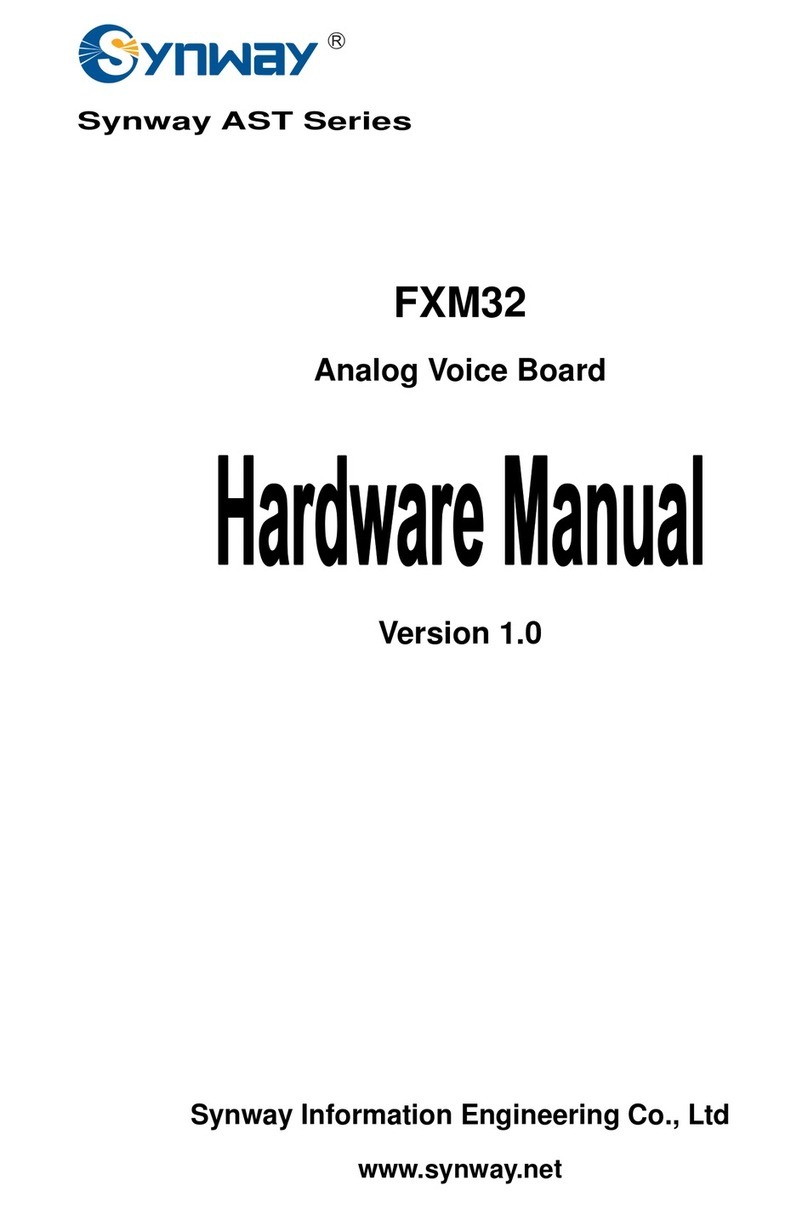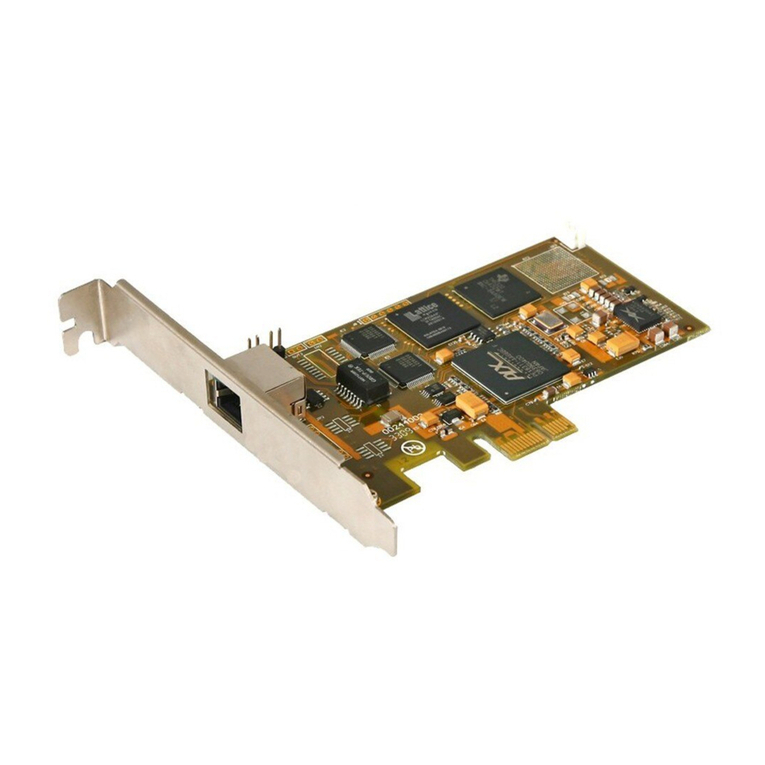Synway Information Engineering Co., Ltd
simultaneous conferences and participants in each conference, allows monitoring
and recording of the whole conference and each individual speaker.
zOn-board Ringing Current & Battery Feed Power Supply
Each station channel has a circuit to generate ringing current and battery feed for
itself, saving the cost on external power supply and facilitating the use.
zFlexible Power Supply Scheme
Multiple power supply schemes are available to provide the 12V power for the boards
using station channels. One option is to connect the P4 D-type hard disk power plug
of the computer, and another choice is to short the S17 pin header and obtain the
power via the PCIe slot. If the power supply inside the computer is insufficient,
external connection of 12V power adapter can be a substitute (Refer to Figure 2-2).
zOvervoltage Protection and Undervoltage Indication
The board is designed with overvoltage protection and undervoltage indication
features. The D1 indicator light is on when the power supply is normal (about 12V).
When the voltage is lower than 10.8V, it is off, indicating the power supply failure
(Refer to Figure 2-2).
zProgrammable Tone Detector
Detects single or dual tones at any frequency, offering facility for use with a variety of
PBXes and key telephone systems.
zSpecialized Driver Algorithm
Uses SPECDial – a specialized driver algorithm - to perform a complete automatic
dial process through analog lines. Accurately identifies called-party statuses and
precisely distinguishes an answering machine from a fax machine that is responding
at the remote end.
zEcho Cancellation
The self-adaptive echo cancellation feature effectively eliminates echoes under
various conditions, which cancels out the effect of voice playback on DTMF and busy
tones detection, avoids self-excited oscillation and howling, and minimizes the
possibility of registering wrong DTMF and busy tones in a conference call.
The board itself has the capability of 16ms echo cancellation. If it is installed with an
E021 module, the capability of echo cancellation will increase to 128ms.
zOptional Modules
Compared with the B-type or C-type analog voice boards Synway launched
previously, the SHT-16D-CT/PCIe board uses the modularized design more
completely. Installing different kinds of modules on a same motherboard of
SHT-16D-CT/PCIe can achieve various features and functions. At present, the
supported modules are only E021 (with echo cancellation capability) and F021 (with
SHT-16D-CT/PCIe Hardware Manual (Version 1.01) Page 2


































